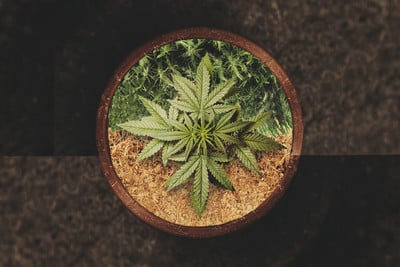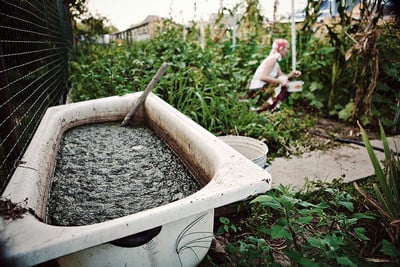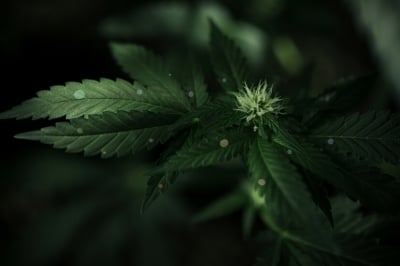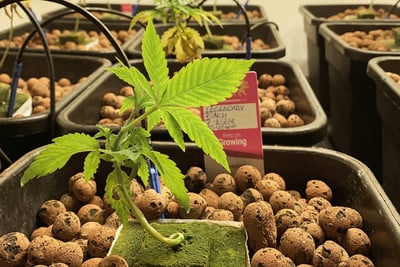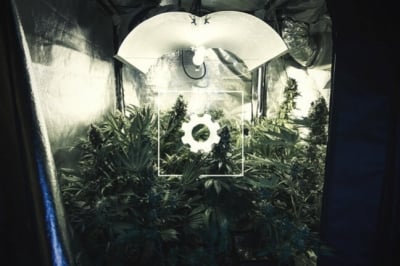.

How to Use Fertigation in Cannabis Growing
Cannabis fertigation can improve growth and take the effort out of watering and feeding your cannabis plants—but it has to be employed correctly. Used to deliver frequent small doses of fertiliser and water to your plants, it improves the efficiency of nutrient uptake, but could run the risk of overwatering and overfeeding your plants.
Cannabis fertigation systems are said to improve the speed of plant growth, and they can definitely take some of the labour out of feeding and watering your plants—especially if you have quite a few. More of an intermediate technique, beginner growers would likely do better to focus their efforts elsewhere.
But if you’re ready for it, in this article we explain what fertigation is and how to use it to improve your cannabis grow.
Contents:
What Exactly Is Fertigation?
“Fertigation” is a combination of “fertiliser” and “irrigation”. It literally refers to giving fertiliser to your cannabis plants along with water. You might be thinking that you recognise this technique. And if you’ve ever mixed liquid fertiliser with water and given this to your cannabis plants, then you’d be right, you’ve been fertigating your cannabis plants all along!
So normal fertigation is nothing new, nor is it a special practice. However, if growing in a coco coir medium, it’s possible to use what’s known as high-frequency fertigation to increase the speed of plant growth by delivering a frequent and steady supply of water and nutrients to your cannabis plants.
High-Frequency Fertigation
Cannabis plants can absorb nutrients more efficiently if they arrive already dissolved in water, rather than having to absorb them from the soil. Thus, giving your plants food in water is a good way to enhance growth.
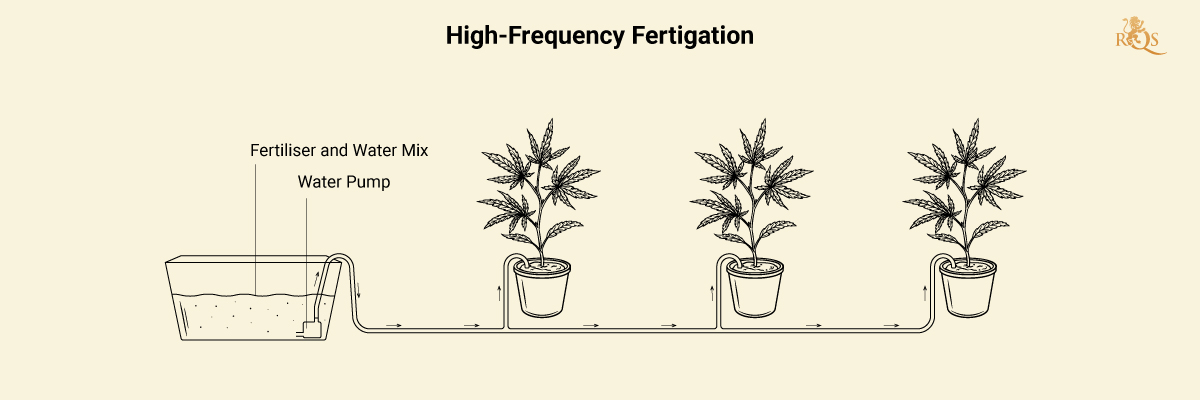
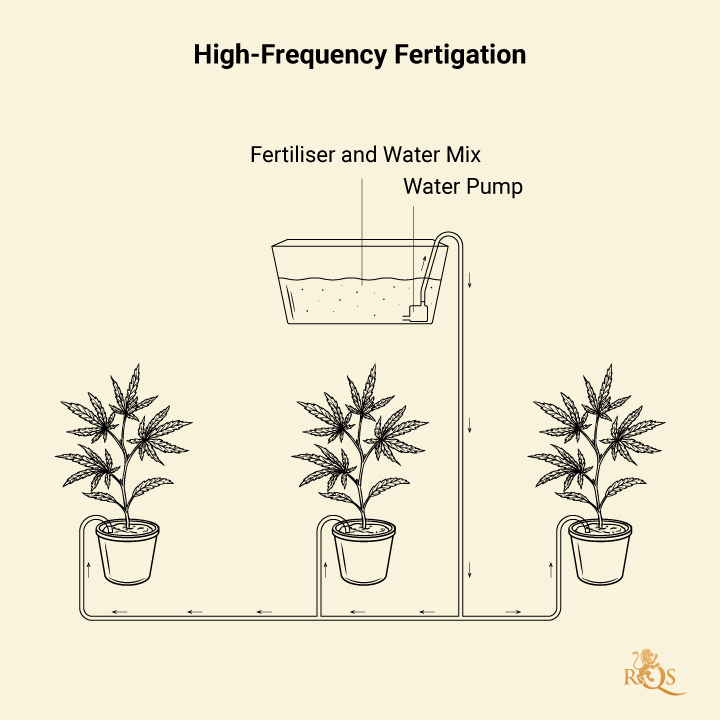
High-frequency fertigation is the practice of giving plants food several times a day—up to five times. In a normal grow, we feed cannabis plants maybe once or twice a week, so feeding them this regularly can seem foolish, as it would seemingly lead to gross overfeeding.
However, if you use the right delivery method and the right medium, it can be highly effective and stimulate growth similar to that seen in hydroponic grows.
The key is to use a coco coir and perlite mix, as this has excellent drainage, which means that, unlike with soil, this constant watering won’t drown the roots. Second, you must deliver the fertiliser in small but frequent quantities; a drip irrigation system is perfect for this.
The trick is to give very small amounts of nutrients to your plants very regularly so it absorbs most of them, thereby utilising them more efficiently and potentially growing faster.
The Benefits of Fertigation for Cannabis
Fertigation is best suited to larger-scale growth, although it could be used even for a single plant. Alongside potentially improving plant growth, it also automates the feeding and watering process, giving growers more time to spend elsewhere. Here are the benefits of using fertigation to grow cannabis.
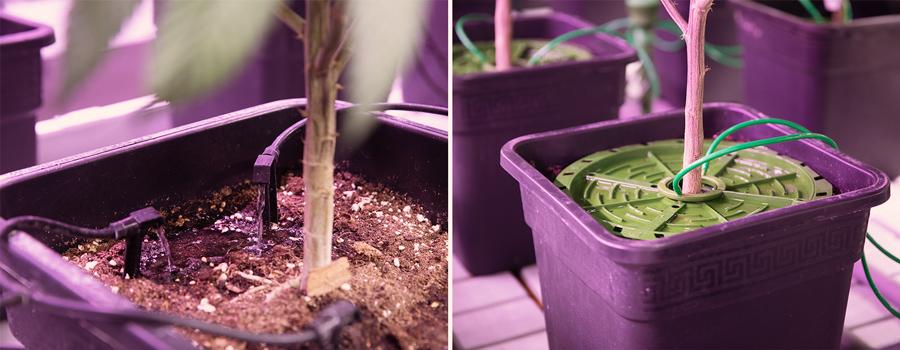
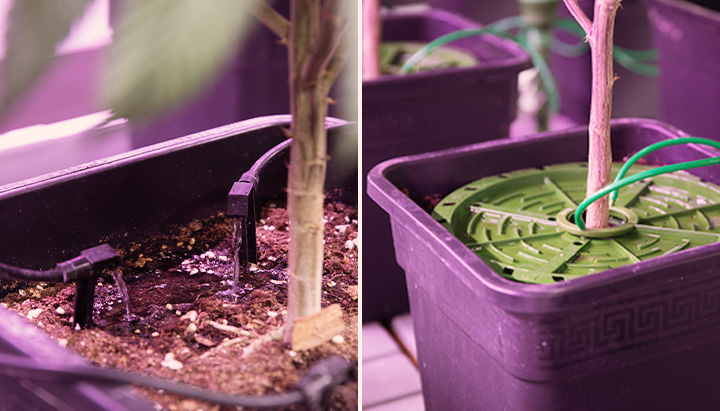
Easy to Fit (Retrofit)
Fertigation can employ a multitude of different systems, depending on your preferences and what you have available. Drip lines, flood and drain, capillary mats, flood tables, and even wicking—each can benefit from the precise nutrient delivery that fertigation offers. Fully water-soluble nutrients are preferred as a means of keeping lines clean; however, as long as the system is well-filtered and flushed regularly, organics like compost teas and insoluble additives can also be used.
Adjust Nutrient Levels for Optimal Growth
The difference in nutrient demands between vegetation and flowering can be quite drastic. Fertigation makes the transition from one type of solution to another simple. Whereas time-release fertilisers and organic additives can only be partially flushed away—as some insoluble salts remain in the medium—fertigation allows for a completely clean rinse as the nutrients are already dissolved in water. Once flushed, simply begin feeding the new mix. This eliminates the need to compensate for any undissolved salts that may throw the EC off.
Organic Growing Media
Fertigation is similar to hydroponics in that nutrients are delivered via water. The difference is that hydroponic systems use inert substrates like stone wool, vermiculite, and perlite, whereas fertigation systems use organic substrates, such as coco coir mixes.
Organic grow media contain a high concentration of carbon compounds, which act as a buffer. These compounds lightly bind with nutrients and slowly release them as the medium becomes more diluted. Buffering makes it easier to maintain the best conditions for cannabis growth, without the precision required in pure hydroponic setups. The carbon matrix also allows for a healthy rhizosphere to develop, where microflora interact directly with the root system, promoting nutrient uptake and overall root health.
Consistent and Automated
The systems used for fertigation are all simply automated and deliver consistent amounts of food and water to your plants. For a small-scale grow, this doesn’t make a huge difference in terms of effort, but once you have several plants, automating processes can, over the course of a few months, save you a lot of time and trouble.
Faster Growth
There is some evidence to suggest that automated fertigation systems can improve the speed of plant growth, similar to hydroponic systems. Now, while this may be the case if all other factors are more or less perfect, don’t expect to see a meaningful difference if you’re not already very proficient when it comes to cannabis cultivation. If you want to improve the quality of plant growth, there are many things to get right before using an automated fertigation system.
Liquid Nutrients vs Granular Nutrients
Most growers opt for either liquid nutrients or granular nutrients. Liquid nutrients come in a liquid form—already dissolved—and are then mixed in with water to create a solution that is then fed to plants. Granular nutrients, on the other hand, are added to the soil and then break down over time when the soil is watered.
Liquid nutrients tend to deliver nutrients to plants on demand, whereas granular nutrients break down more slowly. Each has benefits and drawbacks, but in most cases, liquid nutrients should be used in fertigation systems as they are much less likely to block pipework.
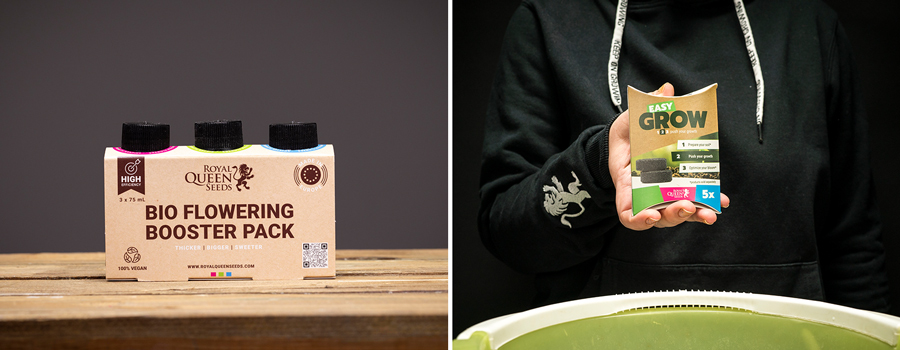
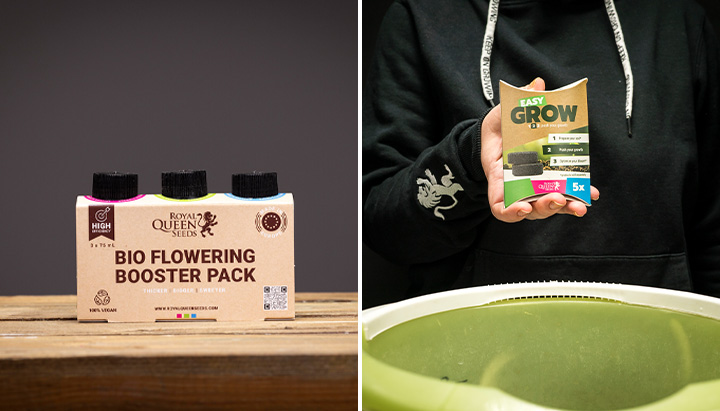
Important Considerations for Cannabis Fertigation
If you choose to employ fertigation to improve your cannabis grow, then you should know how to do so effectively. Below are several important considerations to take into account if you choose to use one of these systems.
Coco Coir vs Soil
First off, the growing medium. As previously mentioned, a 50/50 coco coir/perlite mix is very well-suited to fertigation. This is because, compared to soil, drainage and aeration are much better, which makes it safer to deliver a very regular stream of water to your growing medium.
If you kept watering soil with a fertigation system, it’s likely that it would become waterlogged and your plants would begin to suffer from overwatering, which would stunt growth and eventually kill them if left untreated—not what you want! So using a coco/perlite mix mitigates these issues and allows you to optimise your efforts.
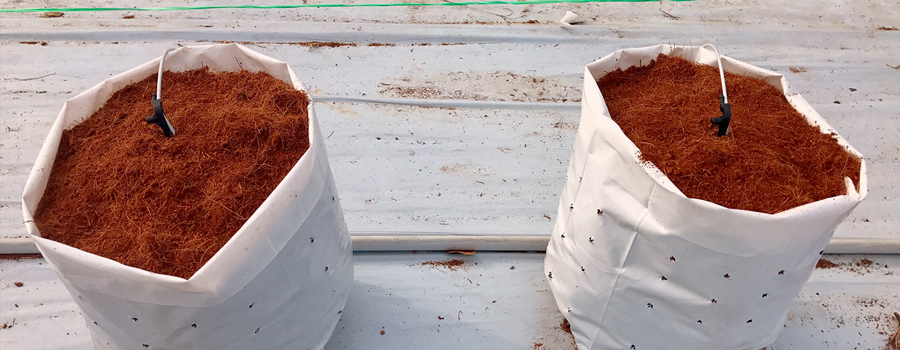
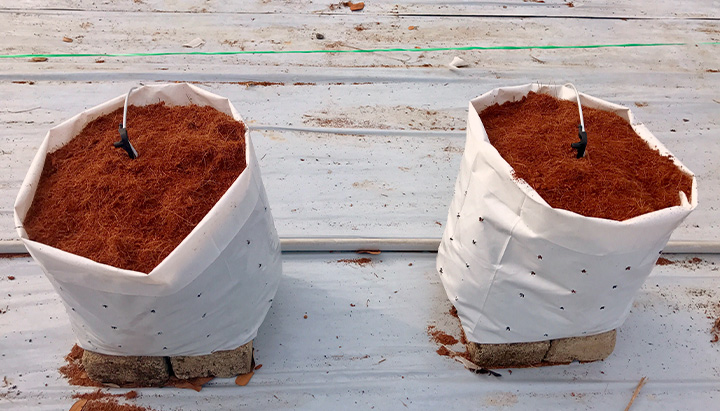
Inline Filters and Flushing
There are a few things that need particular attention when using a fertigation system. Inline filters in the irrigation system, placed immediately after the injectors, must be included. Organics and compost teas may contain fine particles that can clog distribution methods like drip lines. A regular flushing of the system at the end of every cycle is recommended to keep lines free from buildup. Other systems with larger nominal diameter (ND) piping are less susceptible to blockages.
However, in larger grows, plants at the head of the system could be flushed free of nutrients by the time the drippers at the tail of the system have been cleared. As a prevention, extensive grows are broken into parallel intermediate systems fed separately from their own primary water manifold. Or, each intermediate system is flushed separately, using a common mainline, to maintain water pressure. A backflow prevention device is used immediately before the injectors to stop any source contamination.
Measuring EC and PPM
As with any good grow, you should regularly measure the EC and PPM of the solution given to your plants. If you get them wrong, then you run the risk of overfeeding with certain nutrients and causing nutrient burn or lockout. You could also end up underfeeding your plants, though this comes with fewer dangers.
Depending on the growth stage of your cannabis plants, the optimal EC and PPM measurements will differ, so be sure to familiarise yourself with these values. One of the benefits of fertigation is that it allows you to quickly change the nutrient concentrations of your feed, and that of the growing media, so your plants always receive the optimal nutrient ratios.
Moreover, if you do need to change something, then the coco/perlite mix is easy to flush, meaning you can take it back to neutral and then adjust it from there, making mistakes fairly easy to rectify.
Hand Watering vs Automatic Watering
So far we’ve only discussed using automated watering systems for fertigation, and for good reason. It is technically possible to fertigate as described by hand watering, but it would be very labour intensive and extremely difficult to avoid overfeeding.
Do you really want to mix and deliver very small quantities of nutrient solution five times a day, every day, for three months? If you do, then by all means fertigate with hand watering, but you’ll probably thank yourself very quickly if you set up and employ some kind of automated watering system. These can be extremely cheap and simple, so don’t assume that you'll need some extensive, high-tech network of pumps, pipes, and filters to make fertigation work for you.
Adjusting Pot Size
To a degree, you can use a range of pot sizes for fertigation. Reports range from 9–30 litres, and results are said to be respectable at all sizes. Mostly, it depends on which growing method you’re using (for example, SOG) and how big you want your plants to be.
However, the pots shouldn’t be too big. As the plants only get a small amount of nutrient solution at a time, you don’t want to have so much growing medium that the roots struggle to absorb the solution. When in doubt, err on the side of smaller pots.
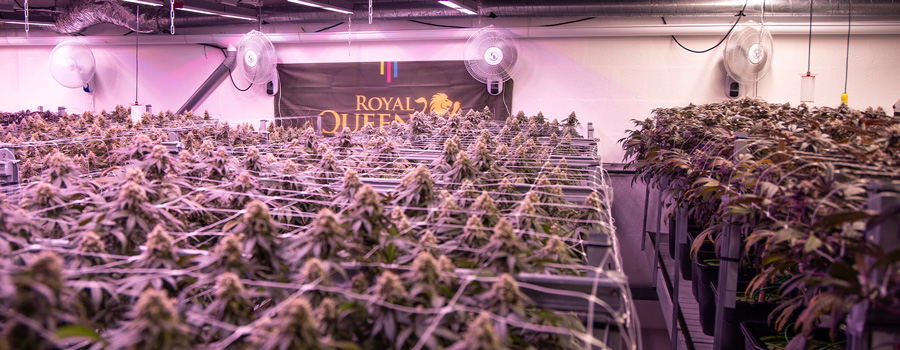
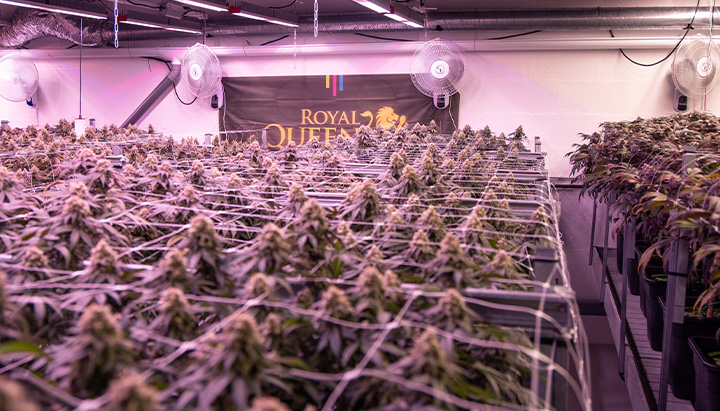
Is Fertigation Right for You?
A fertigation system isn’t that difficult to set up, but it could be considered an intermediate growing technique. This isn’t because of the difficulty of the technique itself, but more because it really becomes useful when you’re either growing a large number of plants, or the rest of your practice is so expert that the tiny increase in efficiency can actually make a difference to the quality of your grow.
However, if you’re jumping in at the deep end and growing many plants at once, then some sort of automated irrigation system could be useful, though not essential, so you might as well make it fertigation.



























